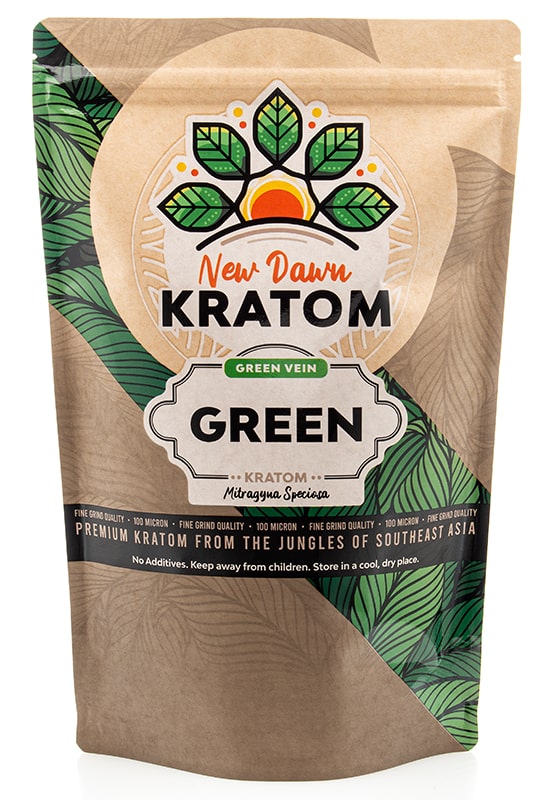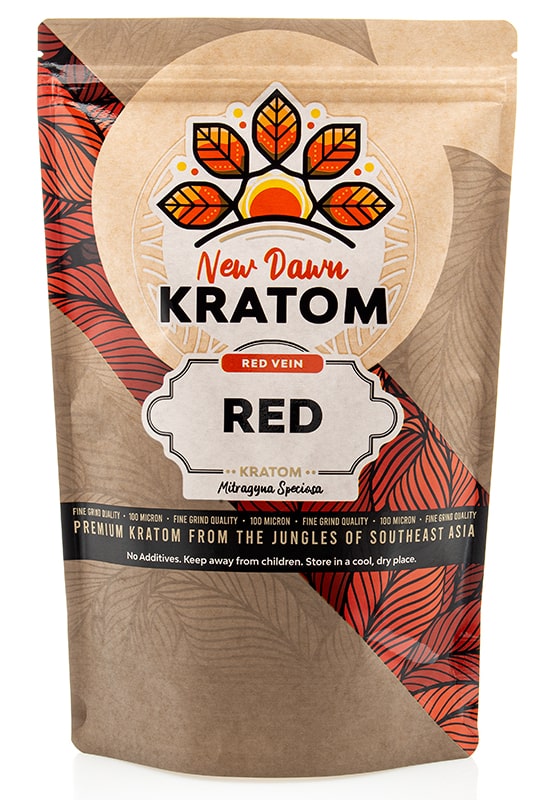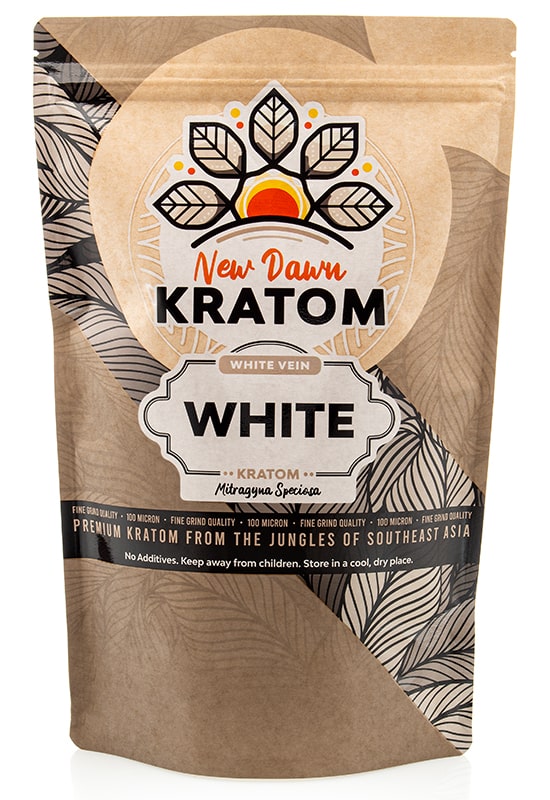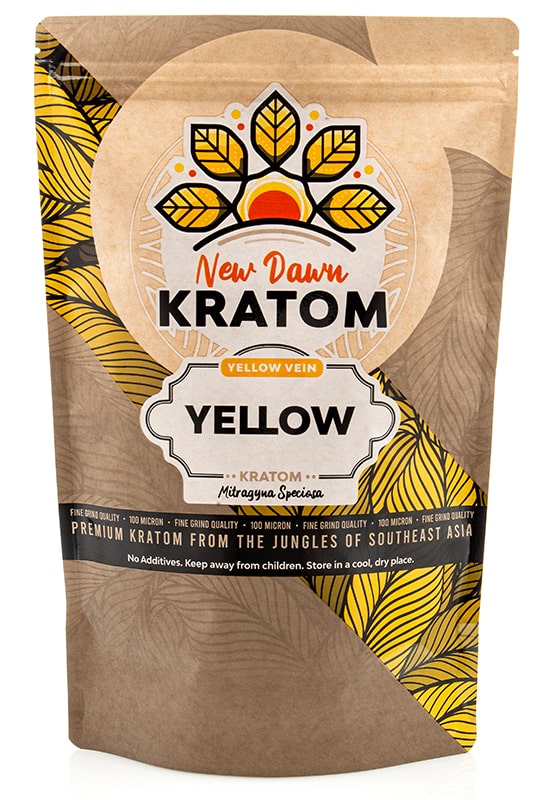If you’ve ever taken the time to read disclaimers posted on kratom vendors’ websites, you’ll notice they all say the same thing — for external use only. Of course, that’s to protect them from the prying eyes of the FDA. But did you know some people actually use kratom for that purpose?
Kratom-infused bath and beauty products have taken the market by storm. And despite the limited research to support kratom’s topical benefits, thousands of users strongly advocate for its positive skin effects.
Is Kratom Good for the Skin?
First things first — is kratom even good for the skin? Interestingly, you’ll find that a lot of kratom users complain about kratom-related acne. According to anecdotal reports, constant, frequent kratom intake may cause blemishes and pimples to thrive.
Based on users’ speculation, these blemishes might come as the result of dehydration. Science suggests that frequent kratom use may cause dehydration, sapping the body of vital hydration that keeps the skin healthy and clear.
As a diuretic, kratom encourages the body to flush out fluid at a much more rapid pace than normal, which leaves the system dry. And because proper hydration plays a major role in skin health, kratom may work against clear skin.
According to kratom enthusiasts, their kratom use has caused problems like blemishes, dark spots, dry skin, irritation, and more. So on the surface, it seems kratom isn’t good for the skin at all. But there’s more to it than that.
While oral kratom intake may dehydrate the body and cause skin problems, topical kratom use could help reverse it. Rich in antioxidants, the topical application of kratom may help remove toxins and dead skin cells to reveal a youthful, healthy glow.

How Does Kratom Benefit the Skin?
Although kratom has been on the market for more than a decade, the studies that explore its effects have yet to uncover its topical effects on the skin. But there are a few basic truths we can deduce from existing kratom studies:
Exfoliation
If you’ve ever had the unpleasant experience of tossing and washing kratom, then you probably already know about its texture. Even when it’s finely ground (sometimes called ‘micro powder’) kratom’s rough texture won’t easily slither down the throat without something to wash it down.
But while the unpleasant texture might attack your oral tolerance, it’s that same roughness that works wonders on the skin. By adding kratom to various bath and beauty products, it exfoliates and gets rid of dead skin cells and surface toxins.
According to skin experts, a little exfoliation now and again goes a long way in helping brighten and lighten blemished, discolored skin. But as with any other skin routine, moderation is key. Too much exfoliation could cause serious irritation and redness.
Antioxidant Treatment
Skin experts still debate whether the topical use of antioxidants would actually benefit skin appearance and health. But most studies agree that a combination of oral and topical antioxidant products can significantly improve skin appearance.
When you’re exposed to UV rays, heat, and pollution, or when you don’t get sufficient nutrition or sleep, your cells become susceptible to oxidative damage. This comes as the result of free radicals that you encounter in the environment.
Studies have long proven that antioxidants help to fight free radicals, reducing the risks of oxidative damage. Thus by adding kratom-infused bath and beauty products to your antioxidant supplements, you can double down on free radical protection.
Infection Treatment
Sometimes, the US kratom market likes to act brand new, but Southeast Asians have long used kratom for a variety of health and wellness reasons, including those that involve the skin.
They would then slather the green mush directly on wounds before wrapping them with a clean cloth or linen. This allegedly sped up the healing process and prevented the possibility of infection.
That’s also why kratom finds itself as a common ingredient in healing salves today. Not only do kratom enthusiasts use these products against things like acne wounds, but healing salves also find purpose against minor cuts and scratches.
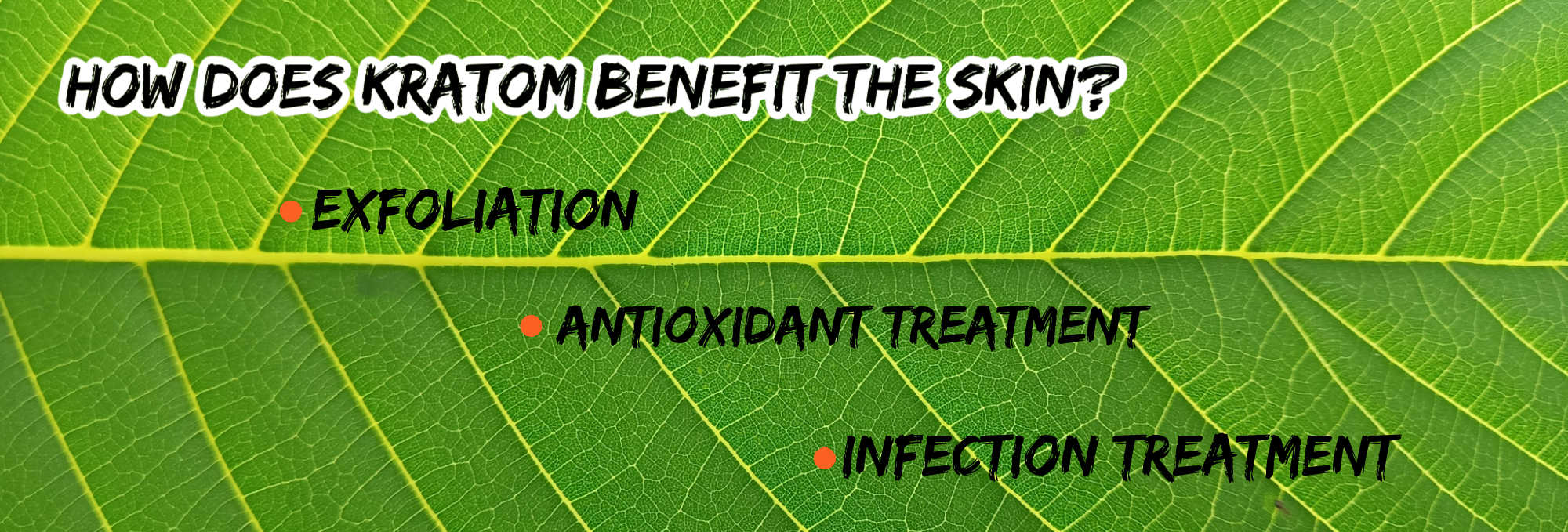
How to Make Kratom Bath and Beauty Products
Convinced that kratom is good for your skin? Here’s how you can whip up your very own kratom skincare products right in the comfort of your home.
Kratom Body Soap Bars
Lots of kratom vendors actually sell kratom soap bars as their bread and butter. Names like Taunton Bay Soap Co. and Soap Korner dominate the market of kratom-infused soaps.
But if you’re looking to make your very own bespoke kratom soap bars, here’s how to do it.
Materials:
- 1lb glycerin soap base
- 1/2 cup carrier oil, preferably coconut or olive oil
- 3 ounces of kratom powder
- Various botanicals, scents, and herbs (essential oils, flower petals, natural fragrances, raw oats — it’s really up to you)
- Rubbing alcohol
- Soap molds
Procedure:
- In a clean, non-stick saucepan, heat up your glycerin soap base at 115°F until completely melted.
- When the glycerin is completely melted, you can add your carrier oil. Turn down the heat, pour the oil, and stir continuously as you do. When they’re fully combined, turn off the heat.
- Add in your botanicals like petals, raw oats, and essential fragrances. Make sure that you stir continuously as you add the ingredients to prevent the base from solidifying too soon.
- Take some rubbing alcohol on a clean cotton pad and wipe the insides of your molds. This prevents bubbles from forming around your soap.
- Pour the mixture into the molds and set aside in a cool dry place. Wait a minimum of 24 hours before attempting to remove the soap from the molds.
Kratom-Infused Bath Bombs
Let’s face it — bath bombs just make for Instagram-worthy baths. But by infusing your bath bomb with some kratom, you can soak in a lush, lavish pool of alkaloids and antioxidants that can calm and soothe your body after a long, tiring day.
Because very few vendors actually offer kratom bath bombs, your best shot at getting your hands on these speciosa-infused balls is to make your own at home.
Materials:
- 1 cup baking soda
- 1/2 cup citric acid
- 1/2 cup cornstarch
- 3/4 tbsp water
- 2 tbsp essential oils or natural fragrance
- 2 tbsp carrier oil like coconut or jojoba oil
- 2 tbsp kratom powder
Optional ingredients: Dried flower petals and natural food coloring
Procedure:
- With the exception of citric acid, combine all of your dry ingredients making sure they’re completely mixed together.
- In a separate container, add all of your wet ingredients. Seal the container tightly and shake it to mix everything well.
- Pour the liquid mixture into the dry ingredients and knead them together to make a dough-like mix.
- Take your citric acid and add it to the mixture, and continue to knead until fully combined.
- Add your bath bomb base to a mold and pack it well to form a solid bath bomb.

Kratom Balm
Perfect for minor cuts and shallow wounds, a kratom-infused balm may help prevent infection while speeding up the healing process. This easy formulation combines all-natural ingredients so you can reap the healing wonders of kratom minus the added chemicals.
Materials:
- 1/2 oz beeswax
- 2 oz rosemary oil
- 2 oz kratom powder
- 1 cup tea tree oil
- Clean linen or cheesecloth
Procedures:
- Mix together kratom and rosemary oil. The mixture should clump together. As you knead and combine the ingredients, form a ball. Place this in the center of your cloth. Wrap the cheesecloth around the ball and lift the edges and secure it with a rubber band so that the kratom and oil ball remains intact in the center.
- Bring a cup of tea tree oil to a boil in a small saucepan. Turn down the heat to a simmer, and place the cheesecloth-wrapped kratom ball at the center of the pan.
- Steep for at least an hour until the oil turns green. When this happens, you can take out the ball and squeeze it to release any oil left in the bundle.
- Add in beeswax and mix until fully combined. Pour the mixture into a tin and set aside to solidify. Use the balm by taking small amounts and slathering it over wounds.

Add Kratom to Your Skincare Routine
The studies might not support the idea of kratom as a skincare staple just yet. But the overwhelming anecdotal evidence should be enough reason to get you to join the bandwagon.
Kratom’s rich antioxidant content and exfoliating properties make it an excellent skincare essential. And while kratom-infused bath and beauty products still haven’t saturated the market, you can always make your own with these quick and easy DIY guides.

